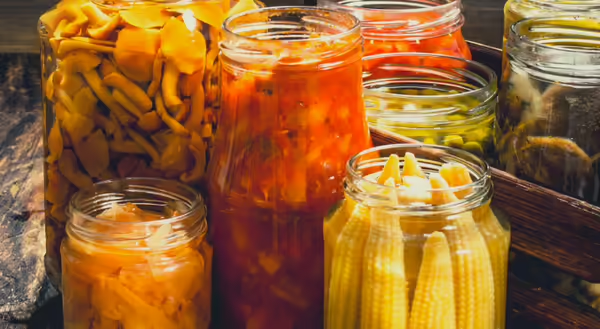
Sour, sweet, bread and butter, Kosher dills, spears, chips, sliced on a sandwich, or as a snack or side dish. Pickles are everywhere!
Pickling is an ancient form of food preservation, dating back to 2030 B.C. when cucumbers from India were pickled in the Tigris Valley. The word “pickle” comes from the Dutch pekel or northern German pókel, meaning “salt” or “brine.”
Every region of the world has its own form of pickling as a way to extend the life of fruits and vegetables. Eastern Europe has Kosher dills and lacto-fermented cabbage, known as sauerkraut. English sweet pickles are made with vinegar, sugar and spices, while the French serve tiny, spiced cornichons (cucumbers).
In the Middle East, pickled foods are served with every meal, from olives to lemons. Russians pickle tomatoes, and Koreans have their kimchi. The Japanese pickle plums and daikon radishes, and Italians pickle eggplants and peppers. Fruit, eggs, artichokes, mushrooms, relishes, chutneys, and chow-chow. You name it, and it can probably be pickled.
The pickling process, for the most part, falls into two methods: quick pickles and fermented pickles. Quick pickles are made with a vinegar salt or vinegar sugar solution, while fermented pickles require time and salt to do the preserving.
Learn more about pickling and other food preservation methods by visiting Extension’s food preservation webpages or accessing recorded webinars on food preservation topics presented by Extension's nutrition and wellness educators:
- Canning with Confidence [YouTube playlist]
- Fill Your Pantry [YouTube playlist]
Be safe and enjoy the “fruits” of your labor all winter long! Check out these additional resources:
- Avery, Tori. History in a Jar: The Story of Pickles, September 3, 2014
- National Association of Home Food Preservation
SOURCE: Mary Liz Wright, MS, Nutrition and Wellness Educator, Illinois Extension